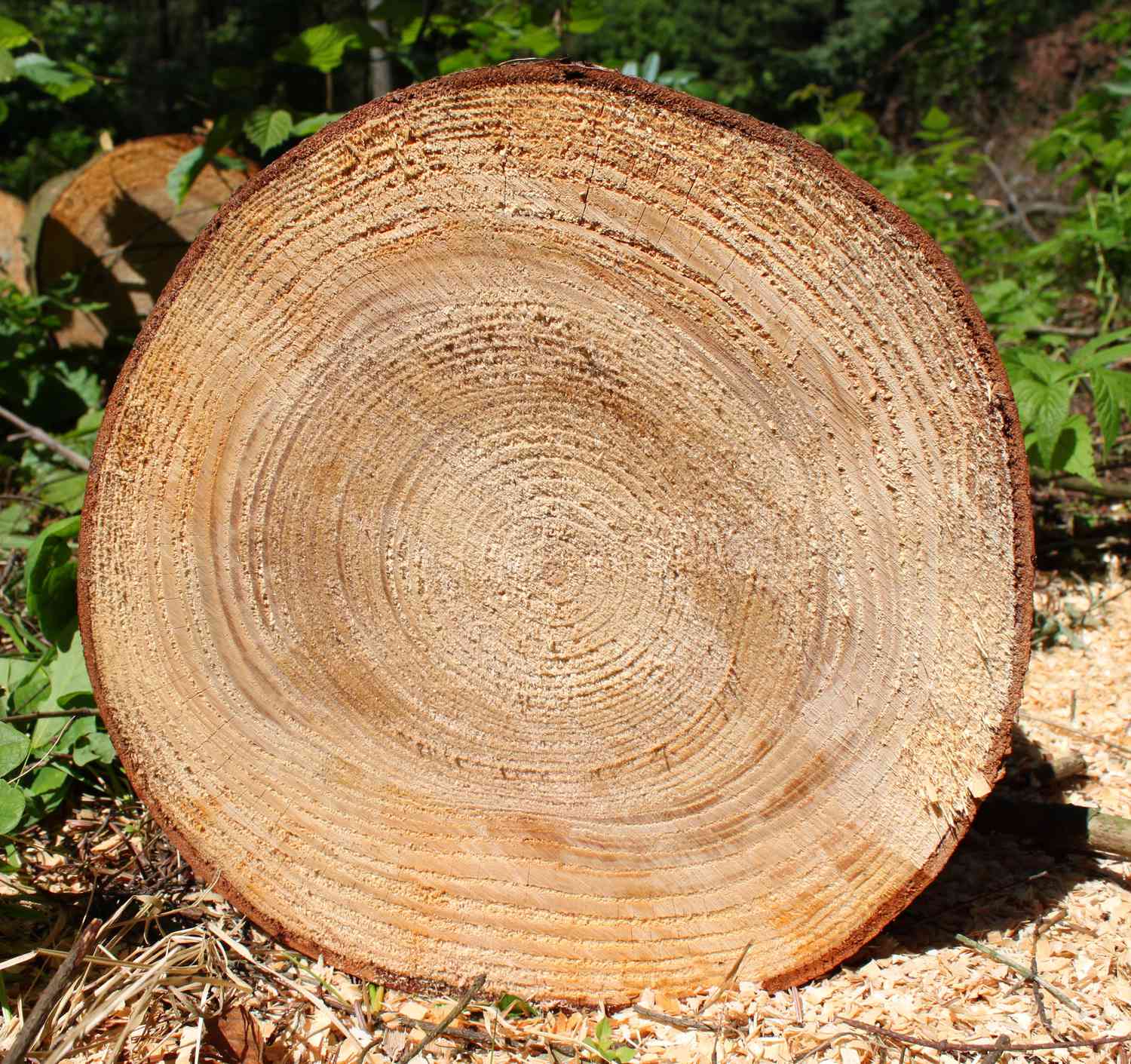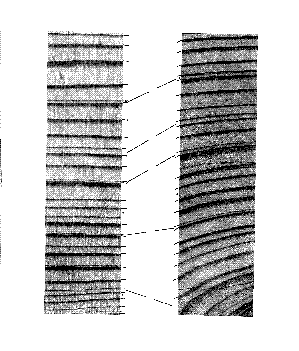What is dendrochronology?
Dendrochronology is simply counting tree rings to determine exact calendar years. The method was developed by A.E. Douglass (Douglass 1919).
The basic principle
In seasonal climates, trees add one ring per year. Wide rings form in good growing years, narrow rings in poor years. This creates a pattern unique to each time period.

How it works
The process is straightforward:
Scientists take small cores from living and dead trees without harming them. They also examine old wooden beams and artifacts.
Each ring is carefully measured and its width recorded. This creates a pattern of thick and thin rings.
These patterns are matched between different trees to find overlapping sequences and build longer records.
Starting from living trees (where we know the current year), scientists count backwards ring by ring to determine the exact year each ring formed.
Cross-dating: How scientists verify their work
Cross-dating is the method used to ensure accuracy. It works like matching fingerprints.
Pattern matching
Just as bad weather affects all trees in a region similarly, good and bad years create distinctive patterns. Scientists match these patterns between many different trees to verify their counts.
Building the timeline
- Living trees: Provide the known starting point (present day)
- Dead trees: Their patterns overlap with living trees, extending the record backward
- Ancient wood: Overlaps with dead trees, extending even further back
Independent verification
Scientists have found exact matches for specific years in tree rings around the world. For example, cosmic ray events created distinctive radiocarbon spikes in 774/775 CE and 993/994 CE that appear in trees globally (Miyake et al. 2012; Miyake et al. 2013). This proves the ring counts are accurate.

The evidence: What the rings show
Scientists have built continuous, year-by-year records that extend far beyond what a young Earth timeline would allow. These are not estimates or calculations—they are direct counts of annual rings.
Irish oak chronology
Scientists have built a continuous 7,272-year sequence from Irish oak trees, verified through cross-dating hundreds of samples (Pilcher et al. 1984, Nature).
German oak-pine chronology
The Hohenheim chronology extends 12,460 years into the past through careful cross-dating of thousands of tree samples (Friedrich et al. 2004, Radiocarbon).
Bristlecone pine chronology
Some individual bristlecone pine trees in California have lived over 4,000 years. Combined with dead wood, the continuous record extends over 9,000 years (referenced in IntCal20).
What makes this evidence reliable
These chronologies are built from hundreds or thousands of individual tree samples. Each sample must statistically match the pattern before being accepted. The process is self-correcting—errors are caught through cross-verification.
How scientists verify these counts
Multiple independent chronologies
Different research teams in different countries have built chronologies that overlap and agree with each other, providing independent confirmation of the ring counts.
Radiocarbon calibration
Tree rings of known age are used to calibrate radiocarbon dating. When scientists measure the carbon-14 in a tree ring they know is exactly 8,000 years old (by counting), they can determine what the atmosphere was like 8,000 years ago. This has created the IntCal20 calibration curve.
Global cosmic ray events
When cosmic ray bursts hit Earth, they create distinctive signatures in tree rings worldwide in the same year. Finding these same signatures in trees from different continents confirms that the ring counts are accurate to the exact year.
Archaeological confirmation
Tree ring dates for wooden artifacts consistently match historical records where they overlap, confirming the accuracy of the method.
What this means for Earth's age
The challenge to young Earth models
If the Earth is only 6,000-10,000 years old, then trees with continuous ring records extending 12,000+ years should not exist. Yet multiple independent research groups have documented such chronologies.
The annual nature of ring formation
Each ring represents one growing season. There is no known mechanism that could cause trees to form multiple rings per year consistently across different species and continents over thousands of years.
Independent confirmation
The accuracy of these counts is confirmed by:
- Cross-dating between multiple trees and species
- Statistical verification programs
- Global cosmic ray event signatures
- Agreement with historical records
- Use in calibrating other dating methods
A straightforward conclusion
The existence of continuous tree ring chronologies extending over 12,000 years provides direct, observable evidence that the Earth is older than young Earth creation models propose.
Limitations and considerations
Like all scientific methods, dendrochronology has limitations that scientists account for:
Geographic limitations
The method works best in regions with distinct seasons. Tropical areas often lack clear annual rings, limiting where the technique can be applied.
Potential ring problems
Sometimes trees may skip a ring in extremely bad years, or form false rings during unusual weather. Scientists account for this by cross-dating multiple samples—these problems are detectable and correctable.
Sample requirements
The method requires well-preserved wood with enough rings to establish patterns. For archaeological applications, the relationship between the dated wood and the event of interest must be clear.
Age limits
The method is limited by tree lifespans and wood preservation. However, where applicable, it provides exact calendar year dating with no assumptions about radioactive decay or geological processes.
Summary
Dendrochronology provides clear, observable evidence about Earth's age:
This evidence stands on its own merits and can be examined by anyone willing to look at the data objectively. The ring patterns, the cross-dating methodology, and the resulting chronologies are all available for independent verification.